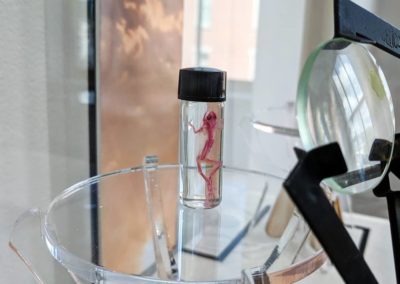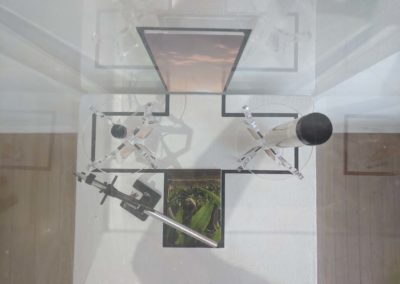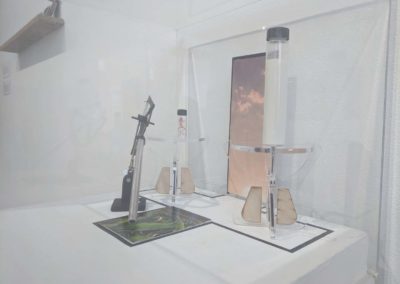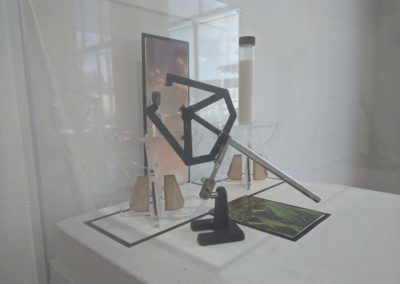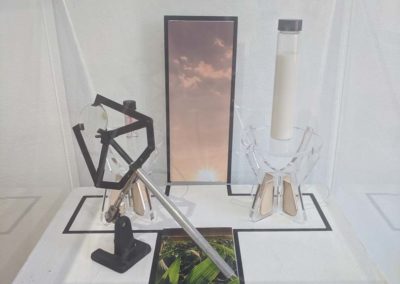Bryon Rich
Alter (2019)
With Alter, I attempt to raises awareness of the proliferation of endocrine disruptors—compounds that interfere with sex hormones—in the environment. Alter displays a frog that has been exposed to Atrazine, a herbicide commonly used by American agricultural corporations. Atrazine is a dangerous endocrine disruptor common in the food supply, and it altered the hormone levels in this frog to make it classifiable as “intersex.” Alter highlights the hypocrisy of a corporate system that uses chemicals known to disrupt hormones associated with gender expression, when individuals in those same organizations often espouse right-wing ideologies upholding rigid gender norms by displaying both the nonhuman and the anthropocentric product within the confines of an inverted cross. Frogs are indicator species, meaning they manifest effects of toxic contamination. Thus Alter speculates on a possible future, alerting the audience to potentially profound effects wrought on the body by corporate interests. By using an indicator species to highlight the effects of human activity on the nonhuman, in this case through mutation, I am looking into a speculative future where the profit-centric ideology of the American right operates in opposition to the “traditional” values they espouse. Mutation towards an “intersex” human future, in my speculative imagining, is the result of this internally oppositional ideology.
As it relates to the theme of ‘meme’, Alter confronts both the scientific and vernacular usage of the term. As it relates to pop-culture vernacular, Alter plays on the red-state messaging around the emergence of “soy boys” and the sex panic surrounding a supposed “feminization” of American culture through media messaging and greater representation for historically under-represented groups. The troubling labelling represented by terms like “soy boy” has become the content of countless right-wing memes, gatekeeping how masculinity manifests in America. In reality, however, it is through the proliferation of endocrine-disrupting compounds largely from industrial sources, such as agricultural runoff of compounds like atrazine, in pursuit of profitability, that “traditional”, to use the terminology of the political right, notions of masculinity are under threat in so much as the externalities of profitability lead to conditions whereby gender expression is altered toward a non-binary codification.
Alter ultimately speculates on a future where co-creation occurs by the interjection of profit-oriented ideals into ecosystems, and, through a twist of irony, a landscape emerges where hybridity and gender nonconformity (in the sense of middle-American politics) are the mainstream modes of identification. An “intersex” future. Alter consists of a vial of atrazine, an “intersex” frog, an inverted vinyl cross, images of common crops where atrazine is used, two custom plexi stands with oak inlays, and a microscope lens mounted on an alloy armature.

About the Artist
Byron Rich is an artist, professor and lecturer born in Calgary,
Alberta, Canada. His work exploring speculative design, biology
futures and tactical media has been widely shown and spoken about
internationally. He pursued a degree in New-Media at The University of
Calgary before relocating to Buffalo, New York where he obtained an
MFA in Emerging Practices at The University at Buffalo. He was the
runner up for the 2016 BioArt & Design Award, and the recipient of an
Honorary Mention at the 2017 Prix Ars Electronica. He is now director
of Art/Science + Innovation and Assistant Professor of Art at
Allegheny College in Meadville, Pennsylvania.

